UK Nature and Environment
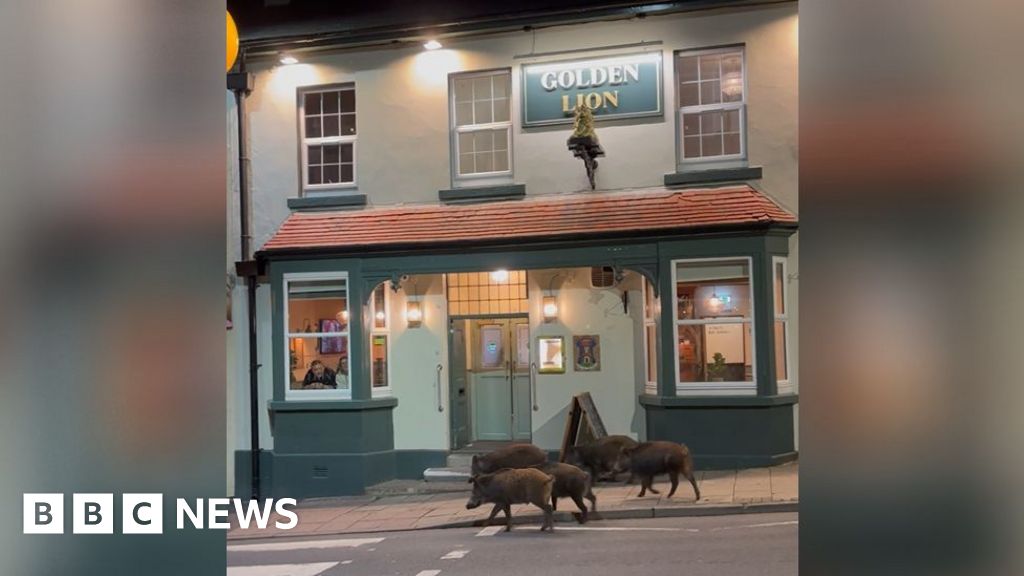 www.bbc.com
www.bbc.com
> A group of wild boar have been spotted wandering past a pub. > >The footage was captured outside the Golden Lion in Cinderford, Gloucestershire, on 2 October. > >Boar were hunted to extinction 700 years ago, but became established again in the Forest of Dean in the 1990s. > >Forestry Commission wildlife rangers monitor numbers in the Forest of Dean each spring and carry out culls, if necessary, to keep the target population to about 400. > >The boars have been known to go hunting for food in the local neighbourhoods when foraging becomes harder in the nearby forest.
As 90 per cent of the habitats that waxcaps thrive in have been destroyed over the past 70 years, The Yorkshire Post finds out why an area in Calderdale is akin to the Amazon for these ancient fungi. It’s a little known fact, but Yorkshire is one of the best places in the world for some of the world’s rarest mushrooms, and October 5 is UK Fungus Day, the National Trust is taking the opportunity to shout about those which can be found at its site at Hardcastle Crags in Calderdale. Around 120 species of ancient grassland fungi, often known as waxcaps, can be found in pastures around West Yorkshire.
East Sussex Wildlife Trust has identified Rye Harbour Nature Reserve as one of the key areas in its blue carbon mapping project. Blue carbon is a concept within climate change mitigation that refers to biologically driven carbon fluxes and storage in marine systems. A spokesperson for the wildlife charity said: “In Sussex, our key areas of work in relation to blue carbon include Rye Harbour Nature Reserve, where we are working to protect approximately 26 hectares of vital saltmarsh habitat.
 www.nts.org.uk
www.nts.org.uk
Nestled in the Cairngorms, Mar Lodge Estate National Nature Reserve is one of Scotland’s most ecologically diverse areas. It has been in the care of the National Trust for Scotland since 1995 and has played host to a series of remarkable projects in conservation and biodiversity. It was thanks to a significant contribution of over £10 million from the National Lottery Heritage Fund, along with support from private donors like the Easter Charitable Trust, that the Trust was able to secure this magnificent estate. The property covers more than 29,000 hectares of astonishing Scottish landscape: heather-covered moorland, Caledonian pine forest, towering mountains and the Quoich wetlands. Its acquisition marked a turning point for our charity, enabling us to launch large-scale conservation and restoration projects to safeguard the estate’s landscapes and biodiversity for future generations. Furthermore, a portion of the funding was set aside as an endowment to fund long-term maintenance and support ongoing conservation efforts. As we now approach the National Lottery’s 30th birthday, we are grateful that we were one of the first organisations to receive funding of this nature from the National Lottery. Since the first draw in 1994, over £49 billion has been raised for good causes and awarded through more than 690,000 individual grants. Thanks to National Lottery players, support has been given to a vast array of projects, ranging from strengthening local communities and powering sports teams to unlocking creative talent and supporting environmental projects such as those at Mar Lodge.
UK Fungus Day is an annual celebration of our fungal world, offering something for everyone. Alongside the many UK-based groups, museums, universities and research centres offering a chance to join fungus walks, view fungi collections and visit exhibitions of the latest fungal science and technology, UK Fungus Day invites everyone to join in, delve deeper and learn more about fungi through art and performance, crafts and creations, online talks, quizzes and competitions.
 www.carbonbrief.org
www.carbonbrief.org
The UK will miss the UN’s deadline to publish a new national plan for how it will address nature loss ahead of the COP16 biodiversity summit in Colombia this month, Carbon Brief understands. At COP15 in 2022, countries agreed to submit new national nature plans – known as “national biodiversity strategies and action plans”, or NBSAPs – “ahead” of COP16, which will take place in Cali from 21 October to 1 November. In December 2023 at the COP28 climate summit in Dubai, the UK pledged to publish its nature strategy by May of this year – and even organised a launch event at Wicken Fen nature reserve in Cambridge for that month – before a change of government in Scotland forced a postponement.
 www.woodlandtrust.org.uk
www.woodlandtrust.org.uk
A petition calling for stronger laws to protect important trees like the Sycamore Gap is tantalisingly close to its 100,000 target, says the UK’s largest woodland conservation charity. A year after the Sycamore Gap trees's devastating overnight felling at its famous Hadrian's Wall location, a rallying cry for people to back the Woodland Trust's Living Legends campaign – demanding legal protection for the UK's oldest and most special trees – has been issued. More than 95,000 people have already pledged their support, and Trust head of campaigning Adam Cormack says passing the 100,000 mark is a "significant milestone" at a time when tree protection laws in England are under review and a new Tree Protection Bill for Northern Ireland will be out for consultation later this year.
>The beach walkers and their playful dogs running in arcs on the rippled sand seemed blind to the casual alien in their midst. Anchored above the tideline, it wobbled slightly in the breeze, spiny green pods raised like medieval weapons. >“Casual aliens” are non-native species that occasionally escape from cultivation, grow for a while and then die off without establishing a population. Botanical jargon aside, the term’s otherworldly weirdness particularly suited this plant. Its thick, branching stems, jagged leaves and menacing seed cases reminded me of the man-eating specimen in Little Shop of Horrors. Though not carnivorous like the one in the musical, it could still kill. >Thornapple (Datura stramonium) is one of the most poisonous plants in Britain. It contains three potent alkaloid toxins that block the body’s neurotransmitters, causing intense nausea, delirium, coma and death. Originating in Central America but now widespread round the world, it’s part of the Solanaceae family, which includes potatoes, tomatoes and deadly nightshade. It’s relatively common in North America, where it’s known as jimsonweed...
Those looking out across the moor in West Yorkshire these days will see clough valleys studded with pale green tree tubes, each housing two-year-old saplings – a whopping 65,000 new trees that have been planted this year. In 20 years, it is expected these trees will have grown into montane woodlands full of oak, birch, hazel, rowan and holly, creating wildlife-friendly corridors through the cloughs across the moor, boosting biodiversity and helping to mitigate the effects of climate change. They represent the first stage in Landscapes for Water, a joint project for the National Trust and Yorkshire Water – the region’s two biggest landowners - that will plant an estimated 300,000 trees over 5,500 hectares of the South Pennines in the next four years.
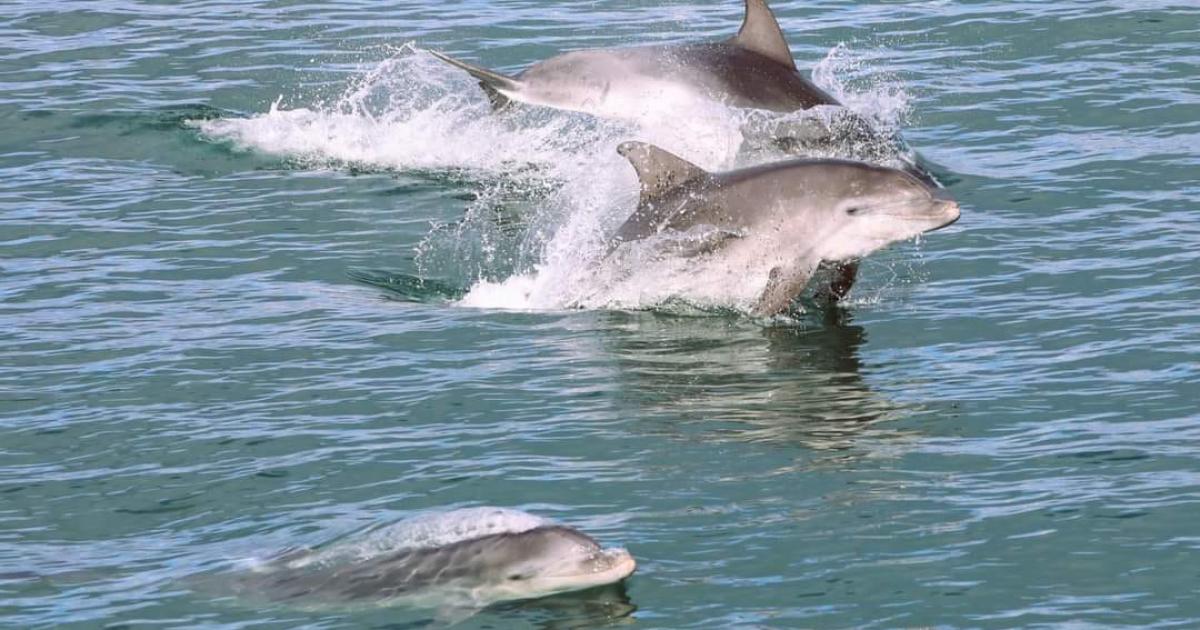 www.dorsetecho.co.uk
www.dorsetecho.co.uk
A POD of dolphins were photographed playfully swimming off the Dorset coast. Don Williams, a Dorset Camera Club member, was sailing along the Dorset coast with City Cruises Poole, when he came across the photogenic creatures. He was driving the Solent Scene towards Swanage Pier as the dolphins glided alongside the vessel. The dolphins are believed to be bottlenose dolphins.
 www.theguardian.com
www.theguardian.com
The amount of land that is protected for nature in England has fallen to just 2.93%, despite government promises to conserve 30% of it by 2030, new data reveals. Campaigners are calling for a “rapid rescue package for UK nature”, as government delegates head to Cop16, the international nature summit, which will take place from 21 October in Colombia. They intend to ask other countries to stick to ambitious nature targets. The commitment to protect 30% of land for nature by 2030 was made in 2020 by the then prime minister, Boris Johnson. But according to a report by Wildlife and Countryside Link, the amount of land in England that can be said to be effectively protected for nature has fallen to just 2.93%, while the amount of sea protected is at 9.92%.
 www.bbc.co.uk
www.bbc.co.uk
The Great Western Community Forest (GWCF) is celebrating its 30th year after it was originally founded in 1994. GWCF covers an area of 39,000 hectares (more than 168 square miles) stretching from the North Wessex Downs Area of Outstanding Natural Beauty to the River Thames. Community forests are spread across a mix of community woodland, private woodland, on-street, urban woodland, wooded habitat corridors and hedgerows. The aim of the forest is to connect communities to green spaces, promote biodiversity, improve flood defences and reach 30% tree cover across the GWCF area.
 www.theboltonnews.co.uk
www.theboltonnews.co.uk
People are being urged to record hedgehog sightings to help save them. The Wildlife Trust for Lancashire, Manchester, and North Merseyside is asking people to record hedgehog sightings to "Help a Hog" this autumn. Hedgehog populations have been declining in the UK, but gardens could provide a refuge.
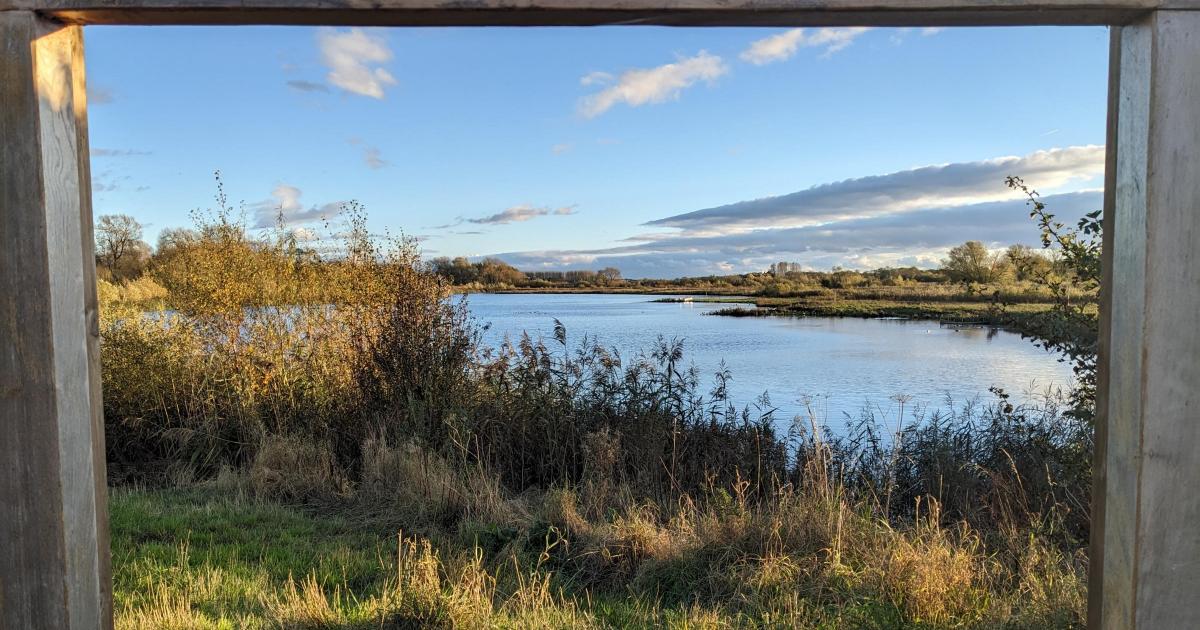 www.thetelegraphandargus.co.uk
www.thetelegraphandargus.co.uk
Our wetlands are wonderous places – so precious for our wildlife and spellbinding for our senses at any time of year. Each one is different – a floodplain, a remnant of a huge marsh or fen, a wild oasis reclaimed for nature from industry – but each of these delicate ecosystems needs protection and careful management to support the abundant life that depends on it. Wetlands are designed to soak up and hold water, releasing it much more slowly than a flowing river or stream would. This means they are important flood defences which can absorb excess rainwater and surface water during periods of wet weather, storing it and letting it trickle out slowly to prevent flash flooding. Our wetlands are also vital for our wildlife: 40% of the world's species rely on wetlands in some way. Yorkshire’s wetlands are both ancient and new; some are historic remnants of a wilder landscape, now surrounded by urban sprawl, whilst others are reclaimed from industry, representing a new start for nature and wildlife.
"An amateur photographer was spooked by an alien-like fungus that resembles a hand reaching out from a grave. The bright red fungi is known as Devil’s Fingers due to its spindly tentacles that protrude from the ground. It gives off a rotting flesh-like smell to attract flies and insects which it feeds on. It is usually found in late October but has appeared early due to the wet weather, and Julia Rosser stumbled across the rare sight in the New Forest, Hants. Mrs Rosser, 67, a retired teacher from Bournemouth, said: ‘I have found Devil’s Fingers in roughly the same area last year so I was on the lookout for them. ‘They burst out of the ground with these red tentacles or fingers. This one looked more like a hand than any I have ever seen before. It looked like it was reaching out from beyond the grave. It looked very creepy.’ The fungi is native to New Zealand and Australia and is believed to have been brought to France during the First World War in military supplies..."
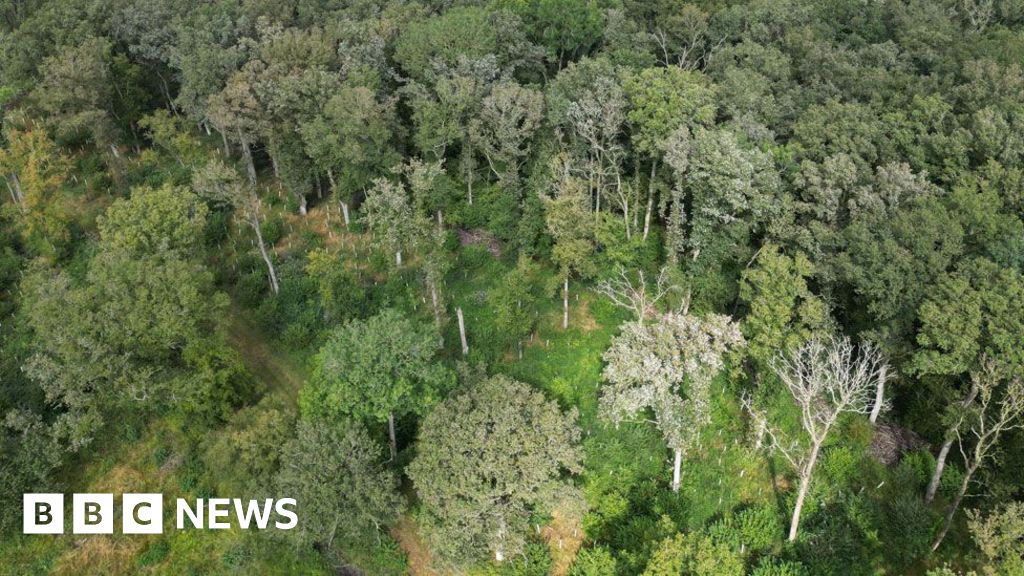 www.bbc.co.uk
www.bbc.co.uk
A two-year project across three counties has uncovered more than 1,300 hectares (3,271 acres) of previously unknown ancient woodland. These are woods that have persisted since 1600, packed with a range of forest-loving plant life, fungi, insects and micro-organisations, making up some 2.5% of UK land (609,990 hectares or 1,507,318 acres), external. The project was run by the Wildlife Trust for Bedfordshire, Cambridgeshire and Northamptonshire. The total area of ancient woodland in the area is now known to be 12,552 hectares (31,016 acres).
Wiltshire Wildlife Trust has issued an urgent appeal to help save critically endangered rare bats inhabiting Green Lane Wood Nature Reserve in Trowbridge. The trust needs to raise £2,000 to unlock a £20,000 grant to help save a breeding roost of rare Bechstein’s bats in the wood. The Bechstein's bat is one of the UK’s rarest bats, found in parts of southern England and south east Wales. It is found almost exclusively in woodland habitats. The destruction of ancient mature forests, along with intensive woodland management practices, has led to a decline in its numbers.
 www.bbc.co.uk
www.bbc.co.uk
Almost £130,000 could be spent by an Essex council on creating wildflower grass verges. The plan is set to be agreed by Rochford District Council on Thursday, following a trial at the Turret House open space between Hockley and Rayleigh. Councillors said it would result in highway verges looking better and being more eco-friendly for plants and wildlife.
 www.kentwildlifetrust.org.uk
www.kentwildlifetrust.org.uk
Bugs Matter, led by conservation charities Kent Wildlife Trust and Buglife, is one of the UK’s few long-term citizen science surveys of flying insect abundance, generating critically important data. This year saw greater participation than ever before, with a total of 8,850 journeys made, covering over 250,000 miles. Lots more people joined in the survey too – 188 new participants joined the effort to provide crucial data on flying insect numbers. Citizen scientists in England recorded the greatest number of journeys (7,501 journeys), followed by those in Scotland (737 journeys), Wales (367journeys) and Northern Ireland (220 journeys).
A new project by the Game & Wildlife Conservation Trust (GWCT) is underway to translocate black grouse from their stronghold in the North Pennines to the North York Moors to expand their range and help them to recolonise areas where they have not bred for nearly 200 years. Black grouse are red listed as a species of high conservation concern. In England, they are now largely restricted to the North Pennines, which includes parts of County Durham, Northumberland, Cumbria and North Yorkshire. Here, numbers remain broadly stable, fluctuating between 1-2,000 displaying males over the last 25 years. The North York Moors have been selected following landscape-scale habitat improvements on the fringes of moorland managed for grouse shooting. This has included the removal of conifer woodland and restoration to bog, heath and scrub woodland, moorland grasslands being managed more extensively and bracken control restoring bilberry and heather moorland. There have been sporadic sightings of black grouse in the North York Moors, but there is no record of them breeding here since the 1840s.
 www.bbc.co.uk
www.bbc.co.uk
Work to release 15 pine martens into woods across Dartmoor has been completed, the Devon Wildlife Trust (DWT) says. The mammals, which are related to weasels and otters, were brought down from Scotland. They were kept in soft-release pens for three days to get them used to their surroundings before being allowed to run wild, staff said.
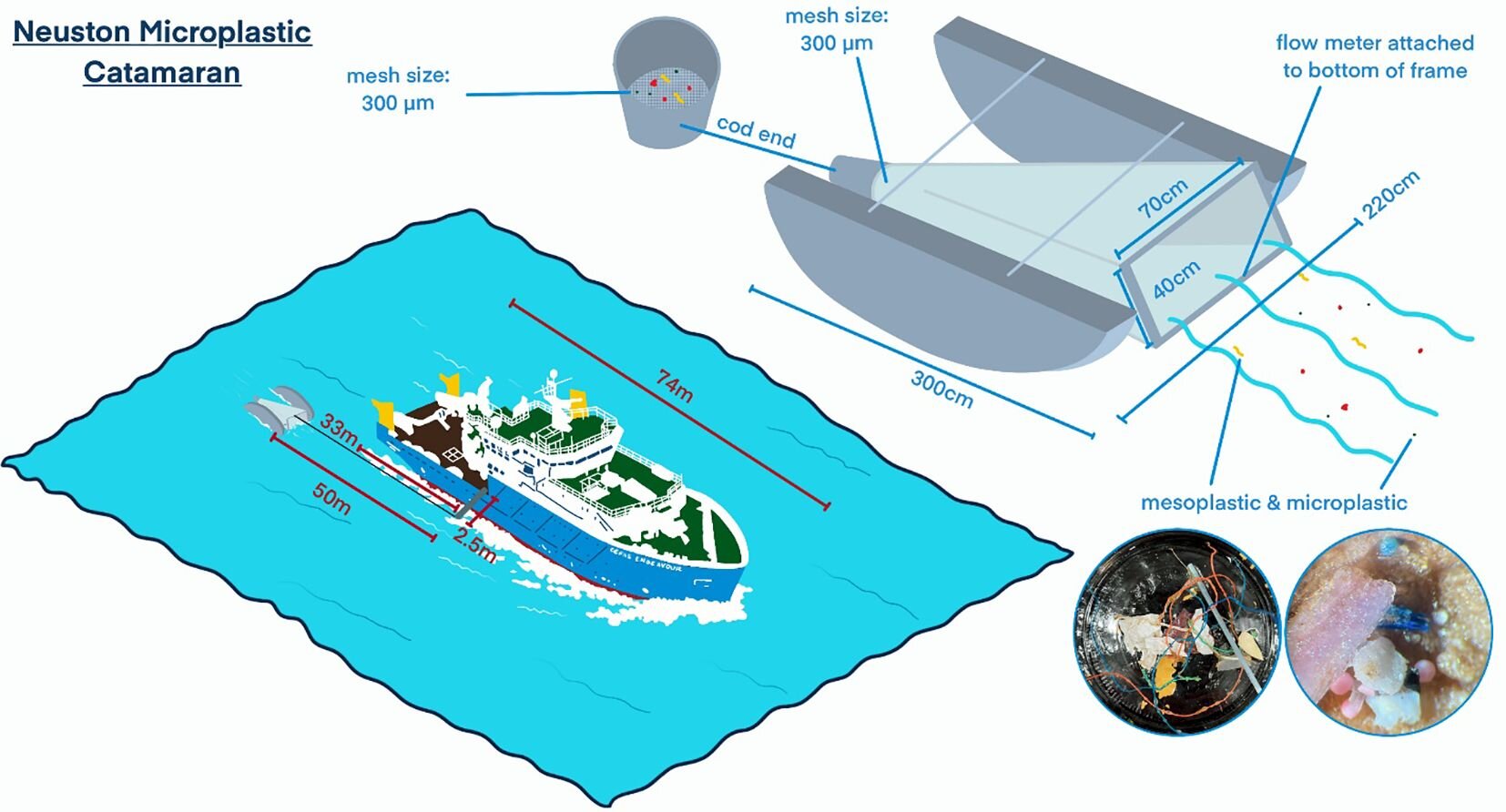 phys.org
phys.org
Microplastic pollution in the world's oceans is often illustrated through evocative images of wildlife caught within large items floating on the surface, or microplastics blending in among the sand on otherwise pristine beaches. The mass of plastics supplied to the ocean each year is vast, potentially up to 12.7 million tons through riverine input in addition to marine-based sources from fishing, aquaculture and shipping industries; yet, that which is observed on the surface does not match accordingly. Consequently, there are missing microplastic sinks in the marine realm. New research, published in Frontiers in Marine Science, has identified the North Sea as home to some of these plastic sinks.
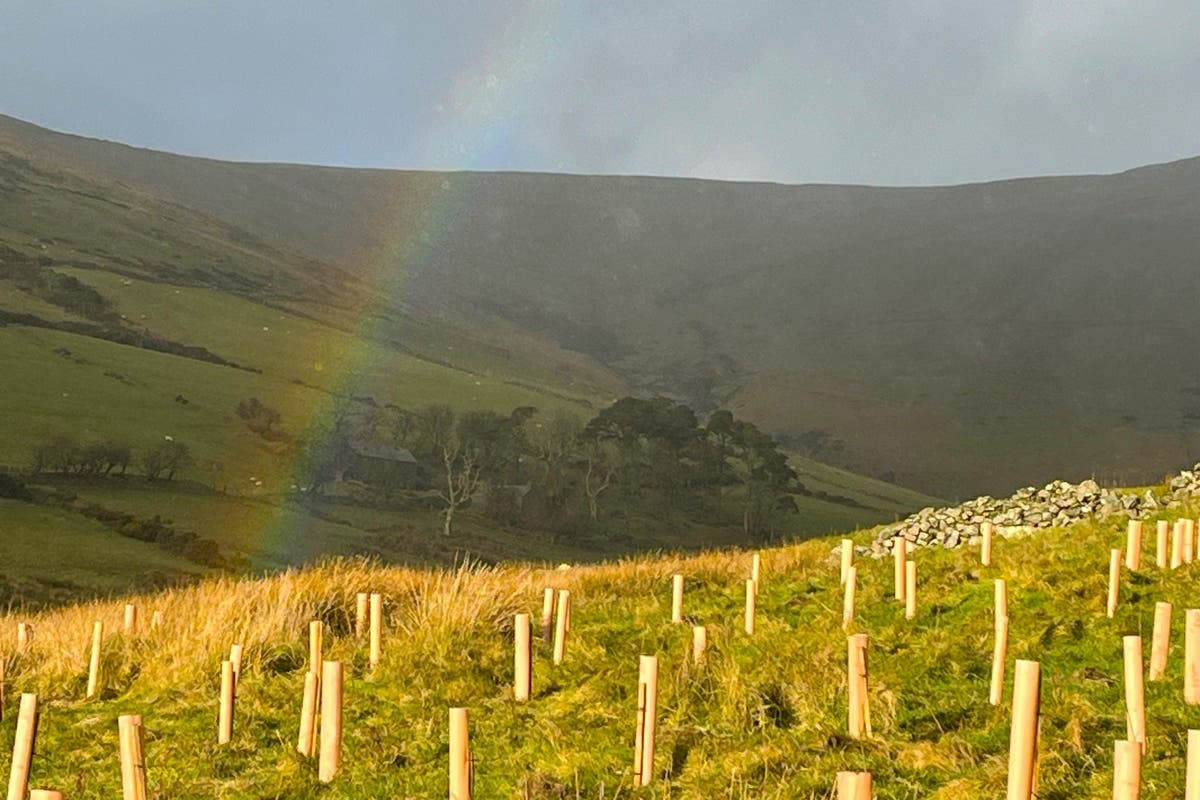 www.standard.co.uk
www.standard.co.uk
The Government needs to establish strategies for individual industries to help reach national and global nature targets, WWF and Aviva have said. The wildlife charity and insurance giant said businesses need “clarity and stability” before investing in solutions to restore nature and move away from environmentally-harmful practices. In a joint report on Tuesday they urged the UK Government to set out clear plans and strategies – dubbed “nature-positive pathways”.
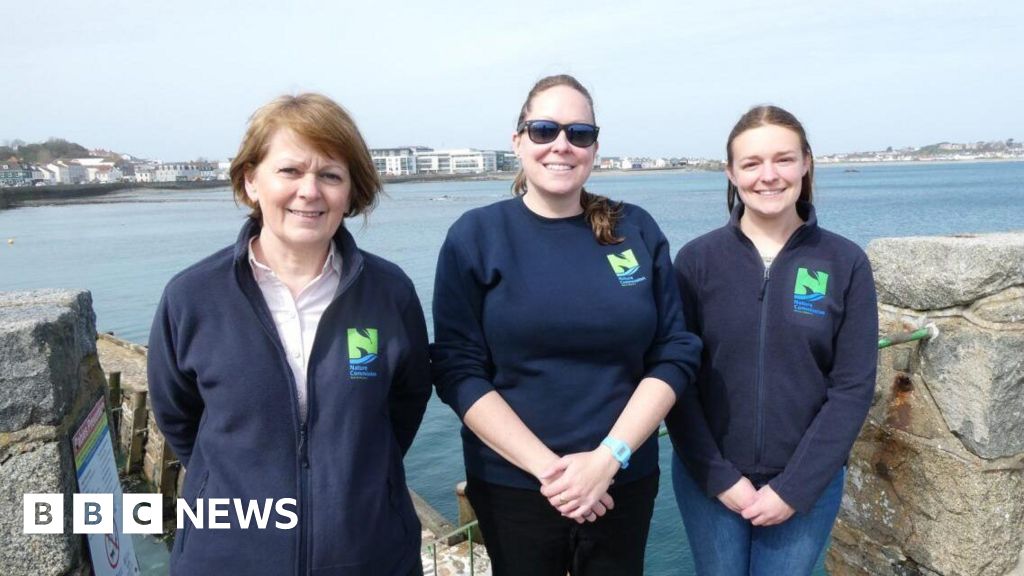 www.bbc.co.uk
www.bbc.co.uk
Guernsey and Herm are experiencing a decline in wildlife species and habitats, according to the first State of Nature report by the Nature Commission. Commission CEO Jessi Jennings said the report helped understand the state of the islands' habitats and species. The report also highlighted trends in the abundance and distribution of habitats and species where possible, she added. Ms Jennings said the report highlighted the lack of data collection, and how the States of Guernsey, businesses and the general public needed to help "enhance and protect" the environment.
 butterfly-conservation.org
butterfly-conservation.org
Two species of butterfly have made dramatic appearances in Scotland in a suspected response to climate change. The Gatekeeper, never officially recorded north of the border before, has been spotted in several places in Scotland this summer, while the White-letter Hairstreak - only recorded around the River Tweed for the first time in 2017 - has now appeared 100 miles further north in Dundee. The surprise sightings are being announced by Butterfly Conservation just days after we declared a UK-wide Butterfly Emergency following the worst-ever results of our Big Butterfly Count this summer.
A major rescue operation is underway to save nine pilot whales that have become stranded on mudflats off the coast of Sheppey. The whales became trapped during low tide in the Swale earlier today. The rescue effort involves thirty members of British Divers Marine Life Rescue (BDMLR), who are using specialist equipment to navigate the difficult mudflats and reach the whales. Rescuers are hopeful that the pod will be able to refloat when the tide comes in during the early hours of Tuesday. EDIT [It seems that one of the polit whales died and the rest are no longer there.](https://www.bbc.co.uk/news/articles/c1m9xeexz37o) Further EDIT [Three other whales were found dead later](https://www.bbc.co.uk/news/articles/c1m9xeexz37o)
 www.heritagefund.org.uk
www.heritagefund.org.uk
New support for local authorities and community organisations to improve access to green space within our urban neighbourhoods. Everyone feels the benefit when nature is part of our daily lives. Evidence shows it makes us healthier, happier, more connected and more resilient. But years of squeezed resources and competition for urban space means nature, green areas and historic parks have been neglected or lost from many neighbourhoods. Our new strategic initiative, Nature Towns and Cities, aims to enable 100 places across the UK to transform access to green space in urban areas and bring nature closer to home for us all to enjoy. It is backed by a partnership between us, the National Trust and Natural England, working closely with NatureScot, Natural Resources Wales and the Northern Ireland Environment Agency.
Earlier this month we held our latest Big River Watch week, a citizen science initiative where we encourage everyone in the UK and Ireland to spend time by their local rivers and share what they observe through our free app. This event saw a fantastic turn out, with 4,800 participants connecting with our rivers and submitting 2,700 surveys. Altogether, across a single week, we spent an incredible total of 50 days watching and monitoring our rivers. The recent Big River Watch ran from the 6th-12th of September and here is what you reported from the river’s edge:
The De Biesbosch National Park is alive with wildlife. White tailed eagles, great egrets, ospreys and kingfishers can be spotted among the vast network of rivers and creeks that comprise the 9,000 hectare site in the Netherlands. Hundreds of beavers live in burrows across the park, ready to come out at night. This landscape was created as part of the Dutch Government’s “Room for the Rivers” project, the purpose of which was to create spaces for waterways to flood to avoid ruining communities. In the process, it created areas for nature to flourish.
 www.bbc.co.uk
www.bbc.co.uk
An emergency plan to save the UK's capercaillie population could lead to birds being introduced from continental Europe to help boost numbers. There are thought to be 532 of the large grouse remaining, with all of them found in Scotland. Experts say they could be extinct within 30 years. Cairngorms National Park Authority (CNPA) and NatureScot have launched the five-year plan.
 www.bbc.com
www.bbc.com
A species of fish known as a lumpsucker was among "amazing" rare sightings made by volunteers taking part in a survey of the Cornish coastline. Run by the Cornwall Wildlife Trust (CWT), the Shoresearch project is a five-day marine wildlife monitoring survey carried out over the autumn equinox spring tides. This year the lumpsucker - so-called because of its lumpy skin and a sucker it uses to attach to rocks and kelp - was spotted at Polzeath, while other Cornish finds were a conger eel, a squat lobster and a corrugated crab.
Around 70 endangered crayfish have been found dead in Northumberland, the Environment Agency has said. An investigation has now been launched by the organisation into the deaths as the species is the only native freshwater crayfish in the UK. The fish were found dead along the River Wansbeck - one of the last strongholds for the species.
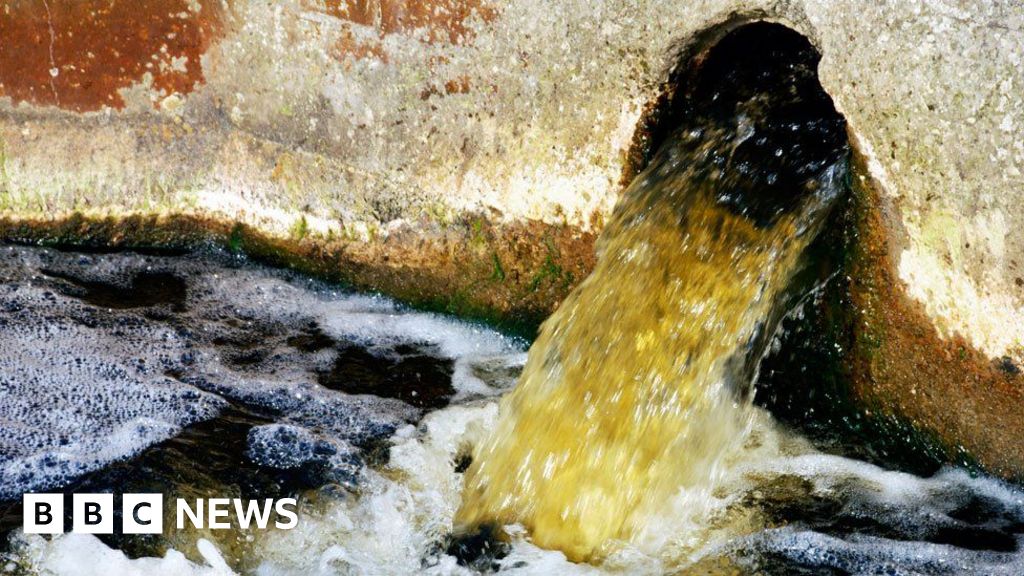 www.bbc.co.uk
www.bbc.co.uk
A water treatment company boss has accused the Welsh government of failing to do enough to tackle river pollution. Wayne Preece, chief executive of Carmarthenshire-based Hydro Industries, said it was "incredibly frustrating" it had not engaged with the firm or others tackling river and sea pollution. The Welsh government did not respond to Mr Preece's comments but has said previously it was working with the UK government to clean rivers, lakes and seas.
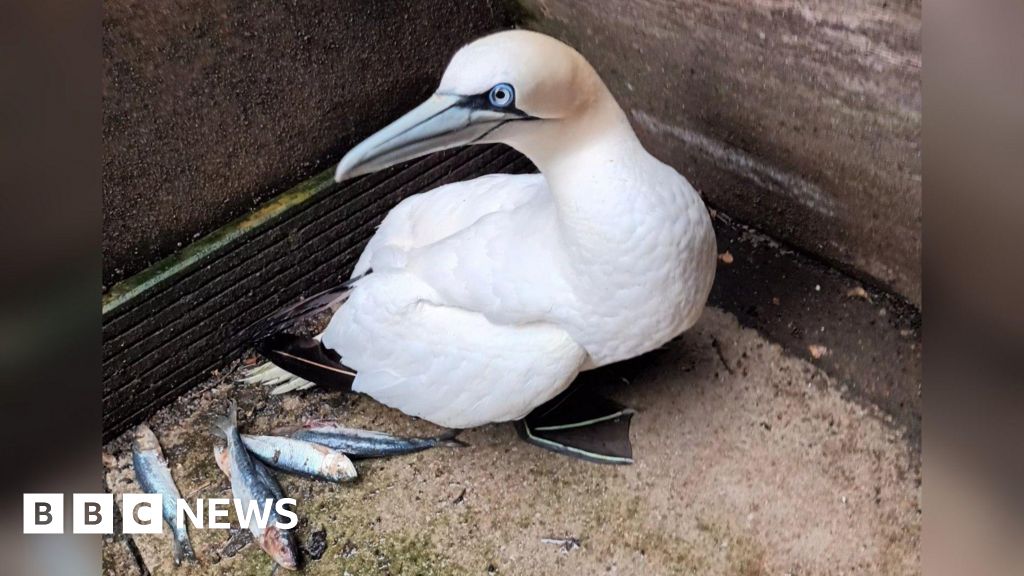 www.bbc.co.uk
www.bbc.co.uk
A lost gannet found more than 70 miles away from the nearest colony has been rescued. The seabird was discovered in a garden in Killinghall, near Harrogate, on 21 September before being driven to RPSB Bempton Cliffs to be released. Jean Thorpe, who helped rescue the bird, said she feared that had she not stepped in to help it would have died. Danielle Jackson, visitor experience manager at RSPB Bempton Cliffs, said to find a gannet one mile from the coast was "unusual" but to find one near Harrogate was "very bizarre".
 www.thenational.scot
www.thenational.scot
A ONCE solitary rowan tree in the Scottish Borders is playing a key role in supporting conservation efforts. The tree has a rich history, having clung on to a riverbank despite the attention of grazing sheep and its hardiness earned it the moniker of The Survivor Tree Of Carrifran. It went on to be named Scotland’s Tree Of The Year 2020 and was selected as a finalist for Europe’s Tree Of The Year 2021. Now the secrets of its genetic code are being unlocked to bring a greater understanding of biodiversity across the UK and Ireland, providing data that will be important for conservation and ecology.
Western Cattle Egret has bred at two new sites in West Sussex this summer as the species' colonisation of southern England goes from strength to strength. At least three nests were found at Arundel WWT in early September, all with hatched chicks. They were discovered after adults were seen carrying nest material in late August. Reserve Manager Suzi Lanaway said: "We were hopeful they were building nests and we are so excited to have seen the chicks!"
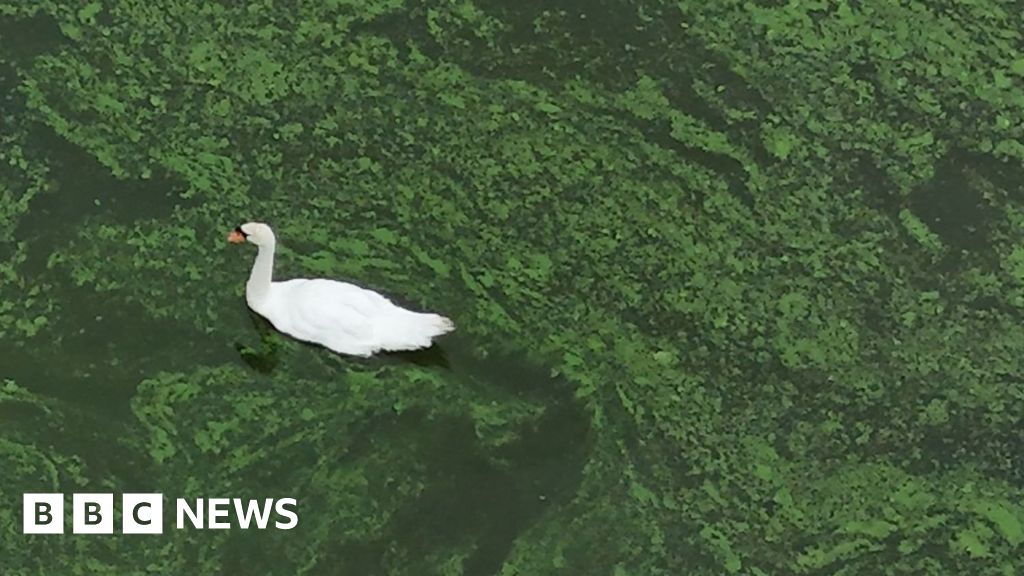 www.bbc.co.uk
www.bbc.co.uk
Five suppliers have been selected in the first phase of an initiative to tackle blue-green algae in Lough Neagh. They have each been awarded a share of £450,000 to develop proof of concepts to treat, reduce and suppress algal growth. Up to three will proceed into a second pilot solution phase next year. Any proposed solutions must not have a negative impact on the natural environment of Lough Neagh or its associated waterways.
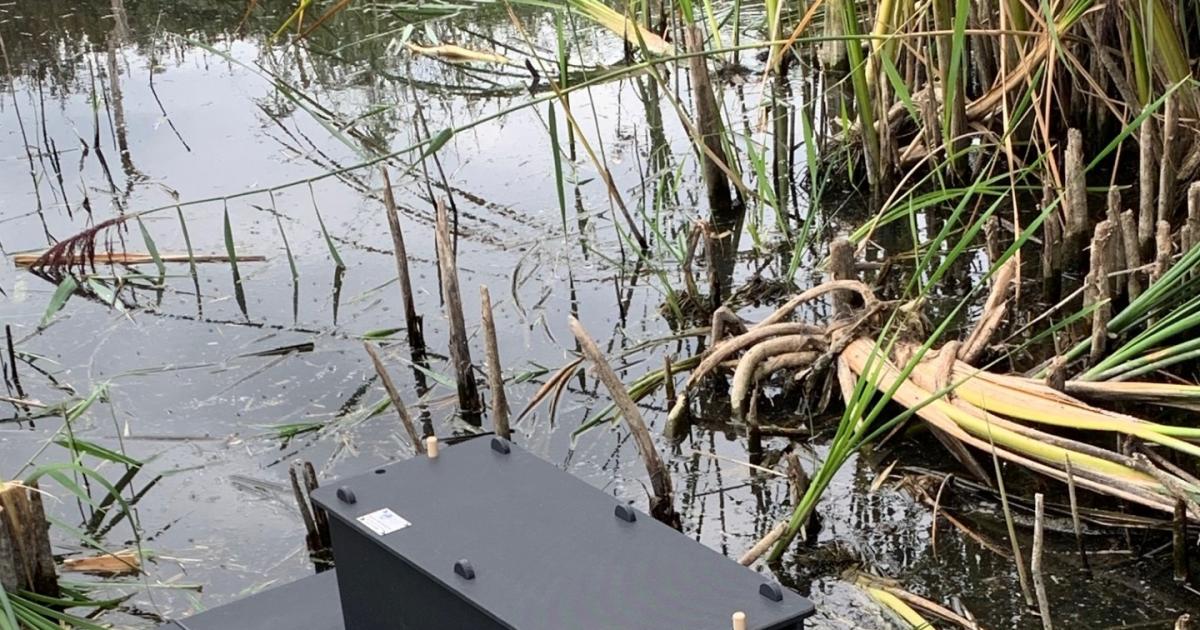 www.thisislocallondon.co.uk
www.thisislocallondon.co.uk
Wild Things columnist Eric Brown learns of anti-mink measures introduced at a Bexley nature reserve and recounts his own worrying encounter with the dangerous species. Nothing could be seen of it except for a pair of large, dark, staring eyes and the top of a black head above water disturbed by its v-shaped bow wave. It moved quickly past my wife and I as we swam in the lake, scrambled from the water and revealed itself as a mink. Then it headed towards a tree where our toddler son was playing with toys. Cue pandemonium. My wife reached our son first and scooped him up away from danger as the startled mink disappeared down a hole in tree roots. Mink, with their razor-sharp teeth and claws, are among the most fearless and devastating small predators around. Larger than a grey squirrel but smaller than an otter, they have voracious appetites and will eat almost anything. One has been photographed killing a grey heron. My sighting occurred in southern Finland around 1980. Within a few years of mink being discovered there the enormous lake had been almost cleared of fish, a local delicacy that sustained generations of people. Next morning I found smoke spiralling up from the tree roots where it vanished and my father-in-law watching over a controlled fire. He later filled in the hole.
 www.railadvent.co.uk
www.railadvent.co.uk
Adders, Britain’s sole venomous snakes, are rare but widespread throughout the country, from Cornwall to Scotland. The habitats formed by railways provide ideal conditions for them and other reptiles. Shap Fell, situated between Penrith and Oxenholme on the West Coast Main Line, is a prominent example, as highlighted in the film.
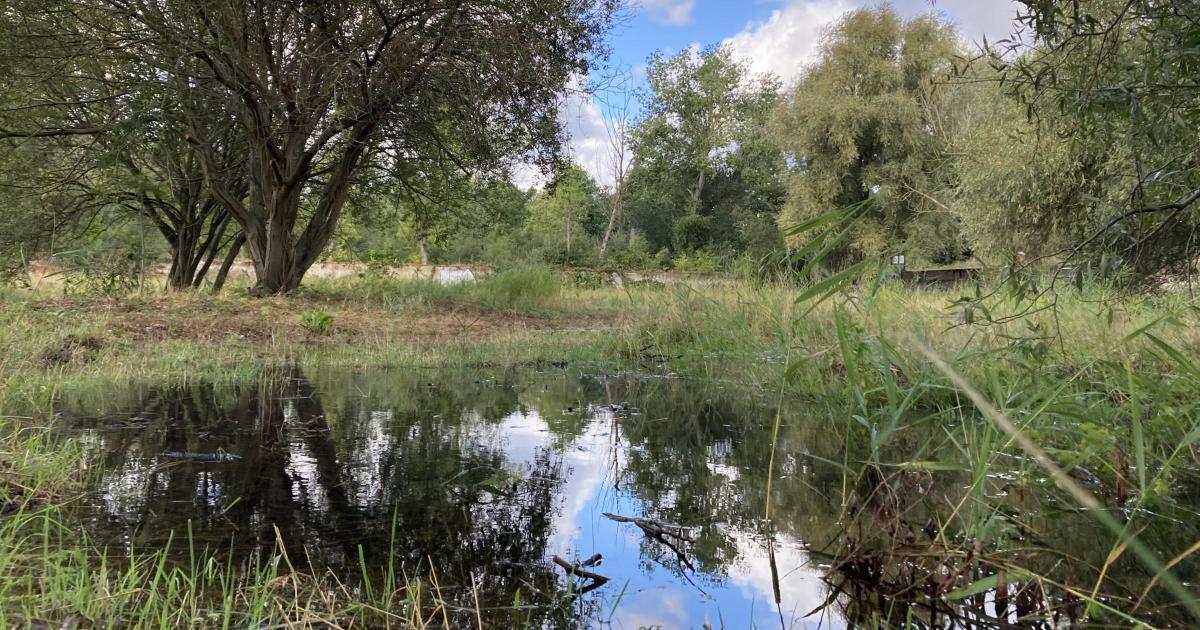 www.eastlondonadvertiser.co.uk
www.eastlondonadvertiser.co.uk
Volunteers have repaired damage caused by years of thefts of water filtering equipment along the Lea River. They have restored the historic Middlesex filter beds as a wetland habitat in a two-year project to return the nature reserve to its former glory. The volunteers worked with a team from Lee Valley Regional Park Authority and conservation experts and civil engineers to reclaim this lost wetland next to Lea Bridge Road. “These dynamic ecosystems are some of the most threatened habitats in the world,” Lee Valley Regional Park’s Paul Roper explained. “There was a real need to restore the wetland habitat, with global warming, pollution and urbanisation having an impact on the number of wetlands in Britain.
UK Nature and Environment
!nature@feddit.ukGeneral Instance Rules:
- No racism, sexism, homophobia, transphobia or xenophobia.
- No incitement of violence or promotion of violent ideologies.
- No harassment, dogpiling or doxxing of other users.
- Do not share intentionally false or misleading information.
- Do not spam or abuse network features.
Community Specific Rules:
- Keep posts UK-specific. There are other places on Lemmy to post articles which relate to global environmental issues (e.g. slrpnk.net).
- Keep comments in English so that they can be appropriately moderated.
Note: Our temporary logo is from The Wildlife Trusts. We are not officially associated with them.
Our autumn banner is a shot of maple leaves by Hossenfeffer.